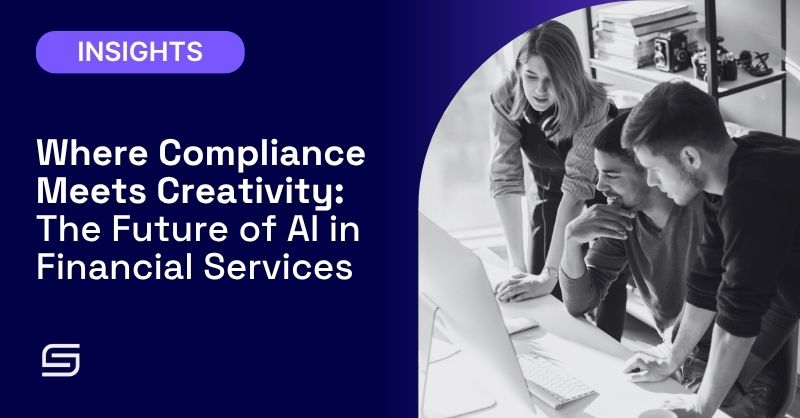Where Compliance Meets Creativity: The Future of AI in Financial Services

When two of the world’s largest financial institutions go all in on AI, the rest of the market takes notice. Citi and JPMorgan are proving that the future of financial services will be defined not by who has the biggest models or the most data, but by who can balance innovation with accountability.
Citi recently announced that 175,000 employees will complete AI prompt training within 60 days, an unprecedented move for a global bank. JPMorgan, meanwhile, is building what it calls a “fully AI-connected” organization, embedding generative AI across nearly every function, from compliance to client engagement.
These are not pilot programs or experiments. They represent a shift from testing AI to trusting AI, where success depends not just on technology but on people who know how to use it responsibly.
AI in a Regulated World
Financial institutions operate at the intersection of innovation and oversight. Every new capability must withstand the scrutiny of auditors, regulators, and risk committees while still delivering faster insights and better customer outcomes.
That tension is what makes the financial sector such an important test case for enterprise AI. A misplaced assumption in a client memo or an unchecked AI-generated report is not just an error; it can be a compliance event. For banks, AI adoption must move as fast as innovation demands but as carefully as regulation requires.
That is why Citi’s program stresses “great prompting versus basic prompting,” and JPMorgan’s approach focuses on “AI connectivity.” Both signal a growing recognition that the future of AI depends on human judgment as much as model performance.
Teaching AI to Think Like Finance
The challenge for financial institutions is not whether AI can generate content or analyze data, but whether it can do so within context. Can it understand what is material, what is confidential, and what is regulated? Can it recognize when to stop and when a human needs to step in?
That requires a workforce trained not just in technical skills, but in AI fluency: the ability to guide, verify, and refine outputs within the unique parameters of financial operations. It is not about replacing analysts or advisors. It is about elevating their impact by pairing domain knowledge with intelligent systems that can operate safely at scale.
Smoothstack’s Role: Building the Responsible AI Workforce
At Smoothstack, we help financial institutions and enterprise clients build the kind of talent ecosystems that make AI transformation sustainable. Our workforce development programs train professionals to think critically with AI, aligning innovation with the compliance, security, and ethical frameworks that define modern finance.
We develop talent that can:
• Apply AI tools within regulated environments
• Translate institutional policies into model-safe workflows
• Balance creativity with control in AI-enabled decision-making
• Ensure transparency, traceability, and trust in every AI interaction
This is not about coding alone. It is about teaching responsibility as a skill set and preparing the next generation of professionals to use AI in ways that strengthen, not strain, the systems they support.
A Model for Every Industry
The financial sector’s AI transformation is setting the standard for how every regulated industry will need to adapt. If banks with complex compliance landscapes and zero-tolerance risk cultures can make AI work responsibly, it proves that the model can scale anywhere.
The lesson is simple: technology enables progress, but people make it possible. The enterprises that invest now in developing AI-fluent, compliance-minded talent will be the ones shaping the future of intelligent operations.
Smoothstack is helping financial institutions train and deploy workforce solutions that keep innovation responsible and compliance creative.
To see how we are helping one leading financial services client operationalize AI responsibly, read our case study.
In the age of AI, progress does not come from breaking the rules. It comes from redefining how we work within them.
Let’s Build Your Team
Connect with the Smoothstack team to learn how to close your digital skills gap with a custom-trained team.